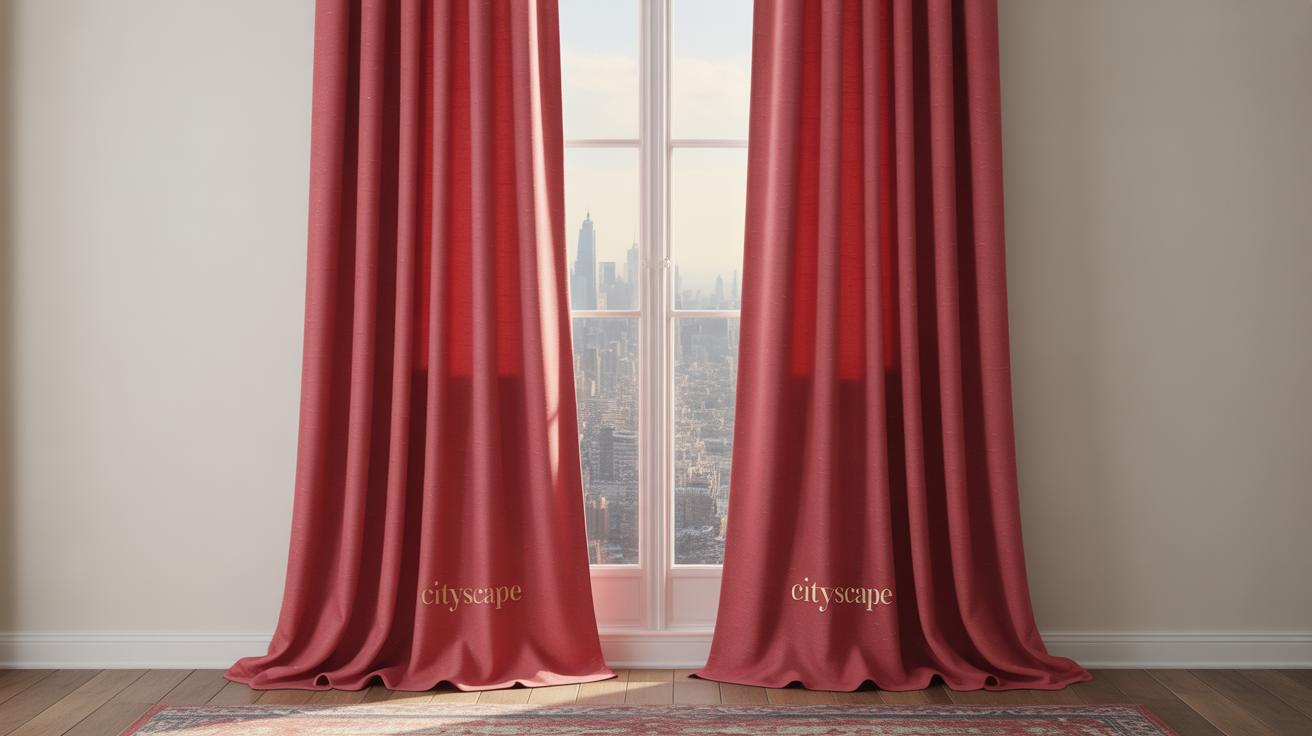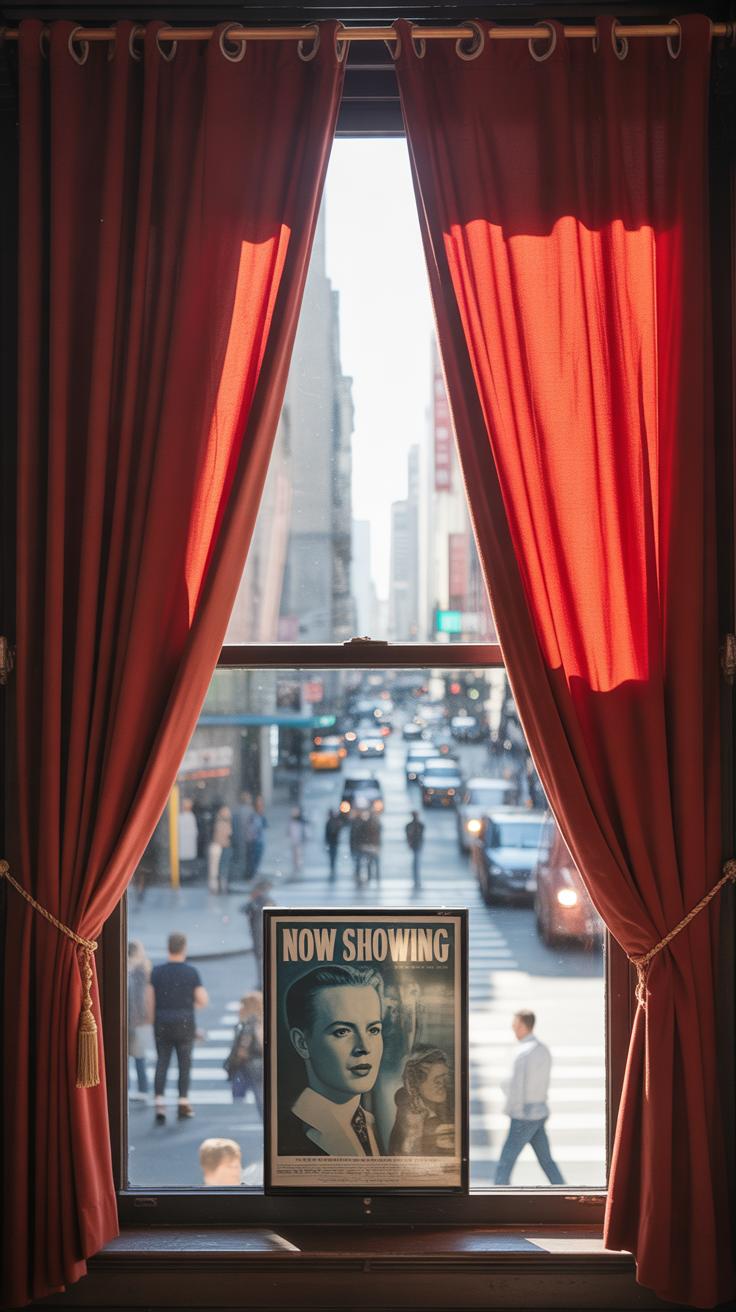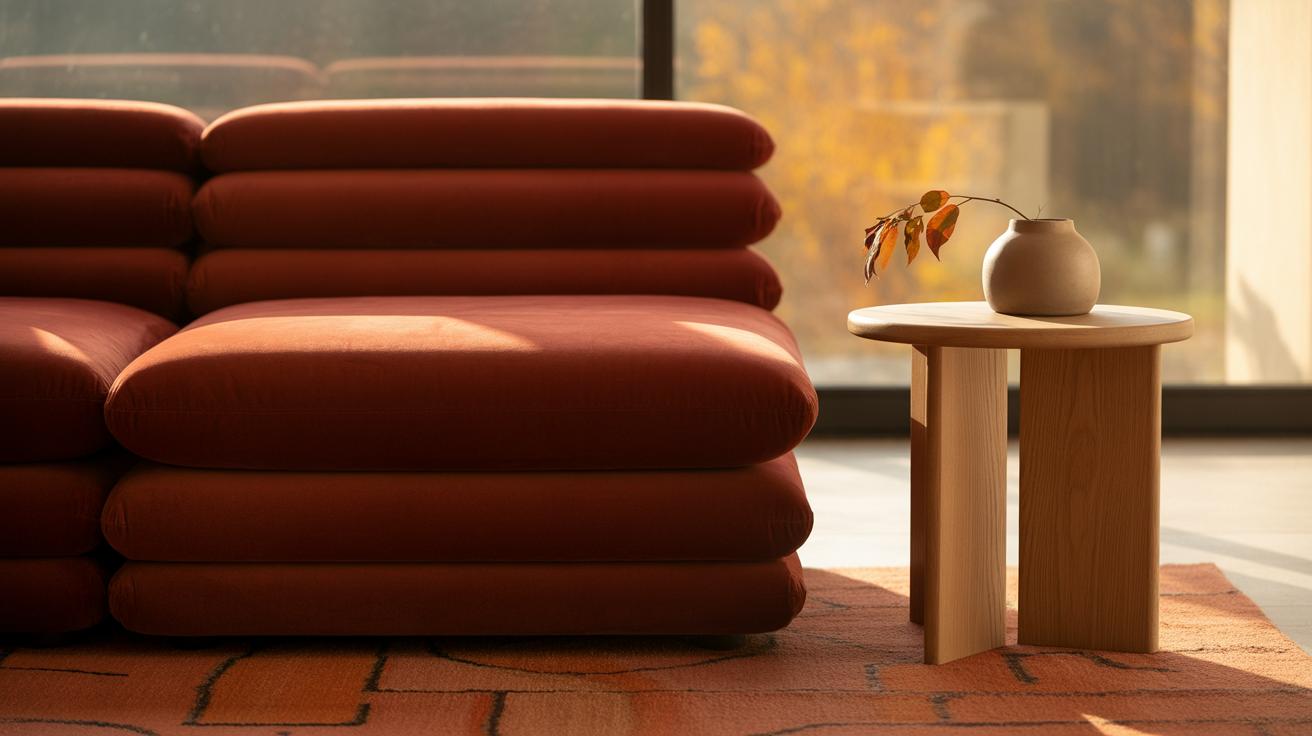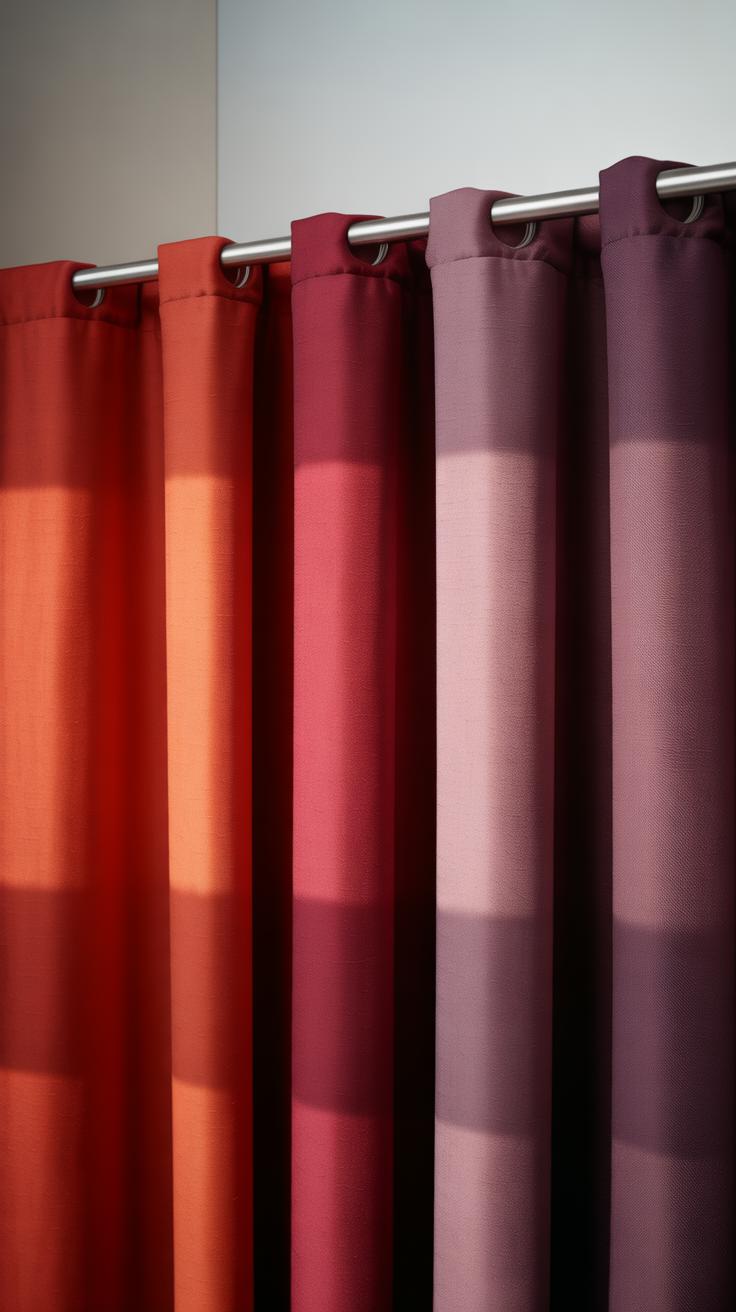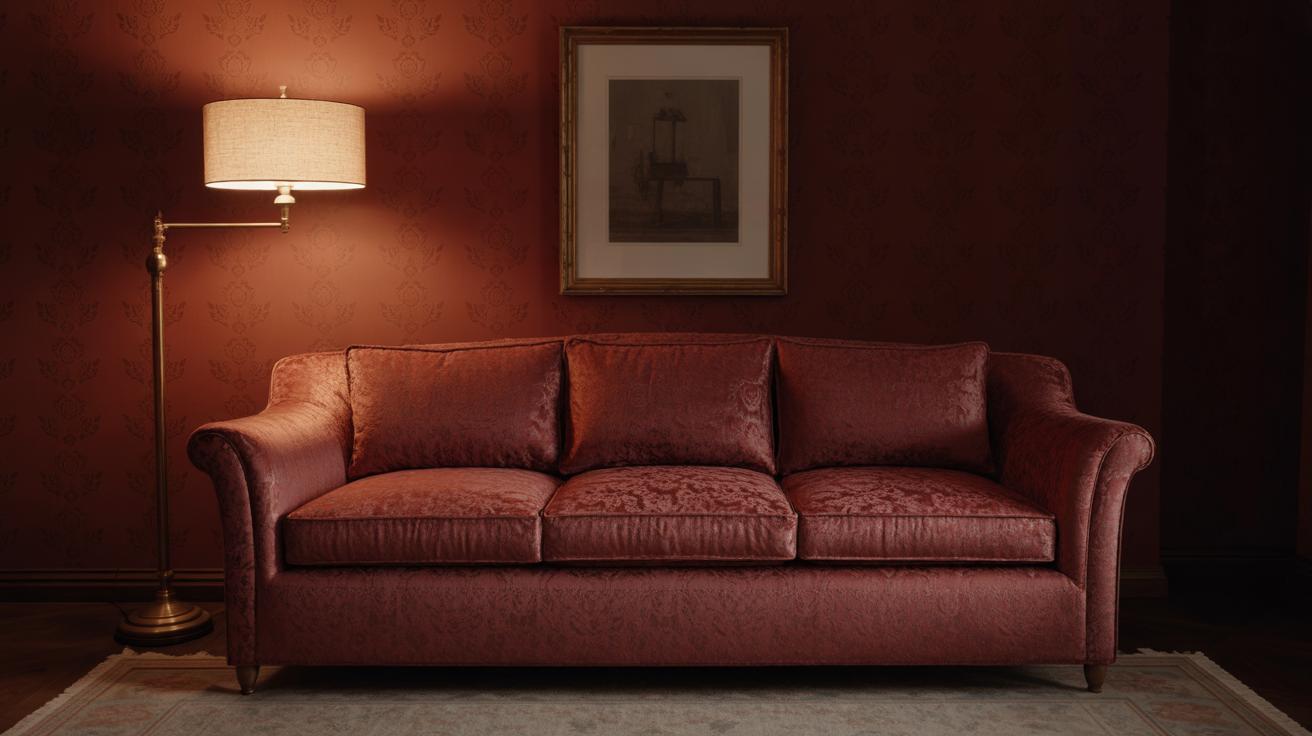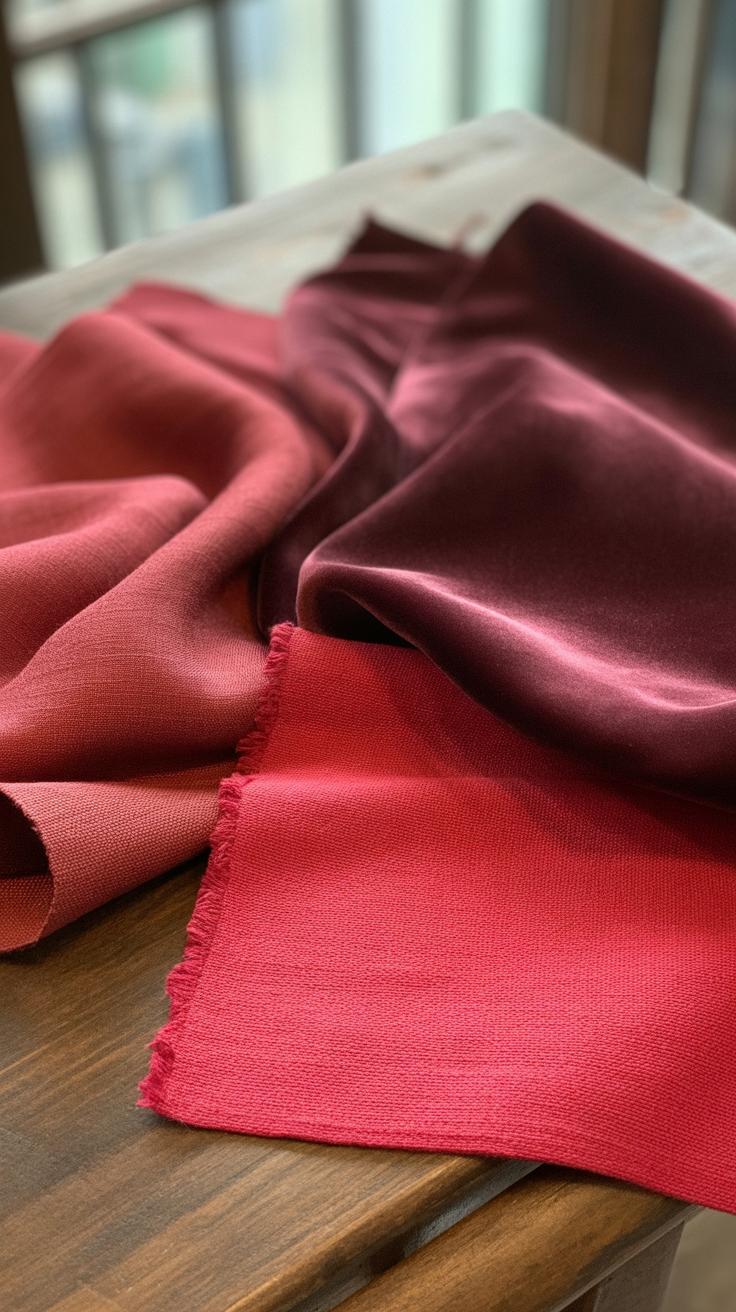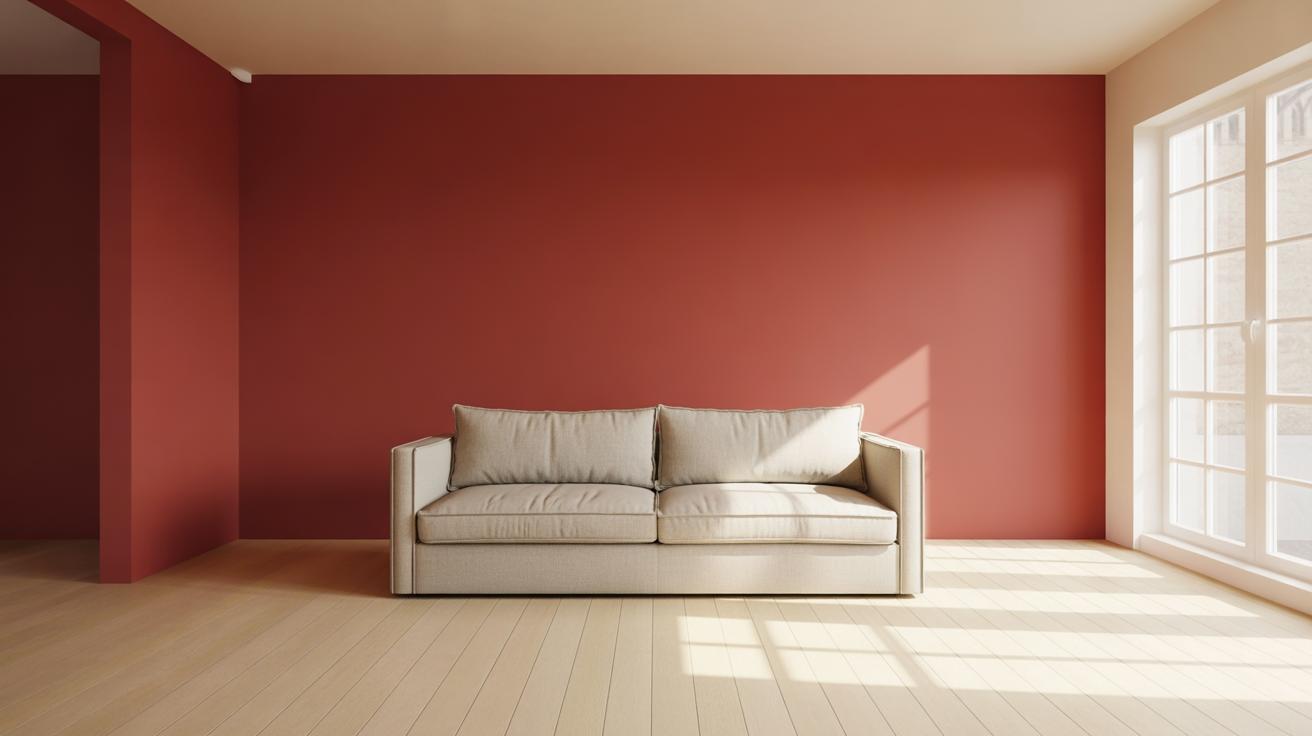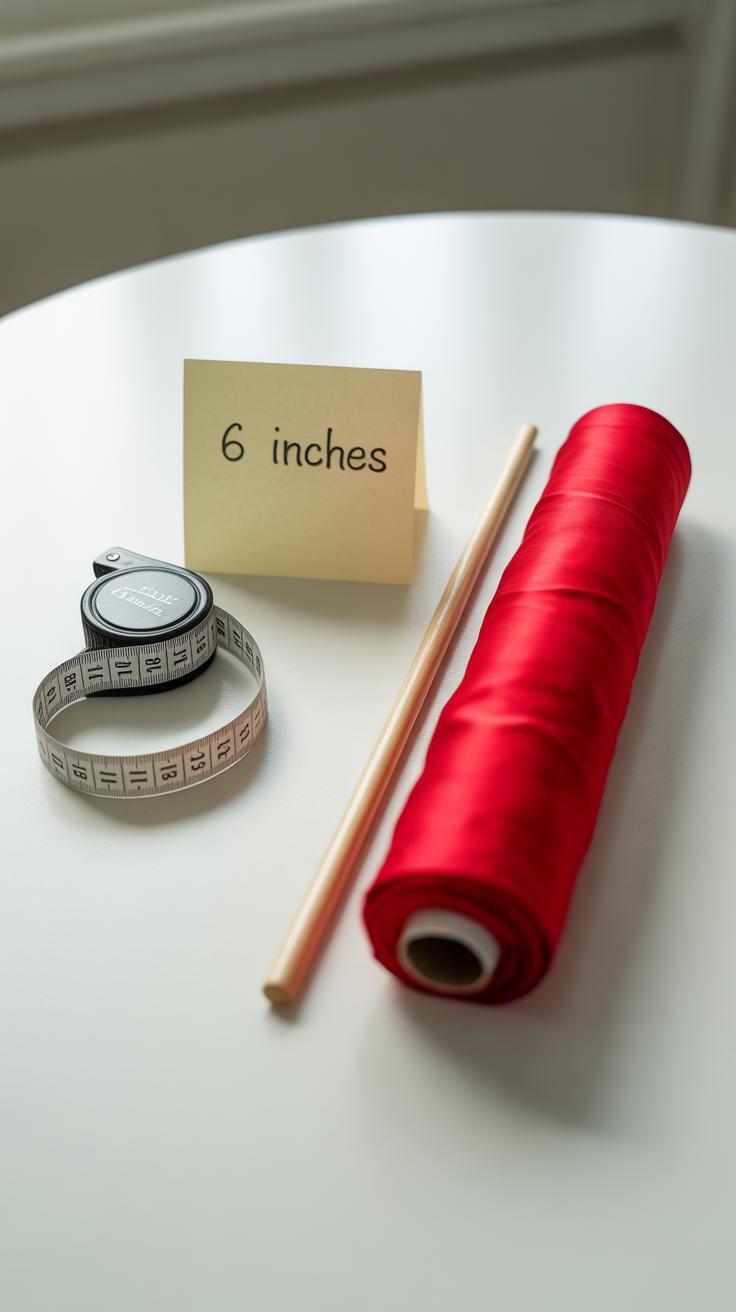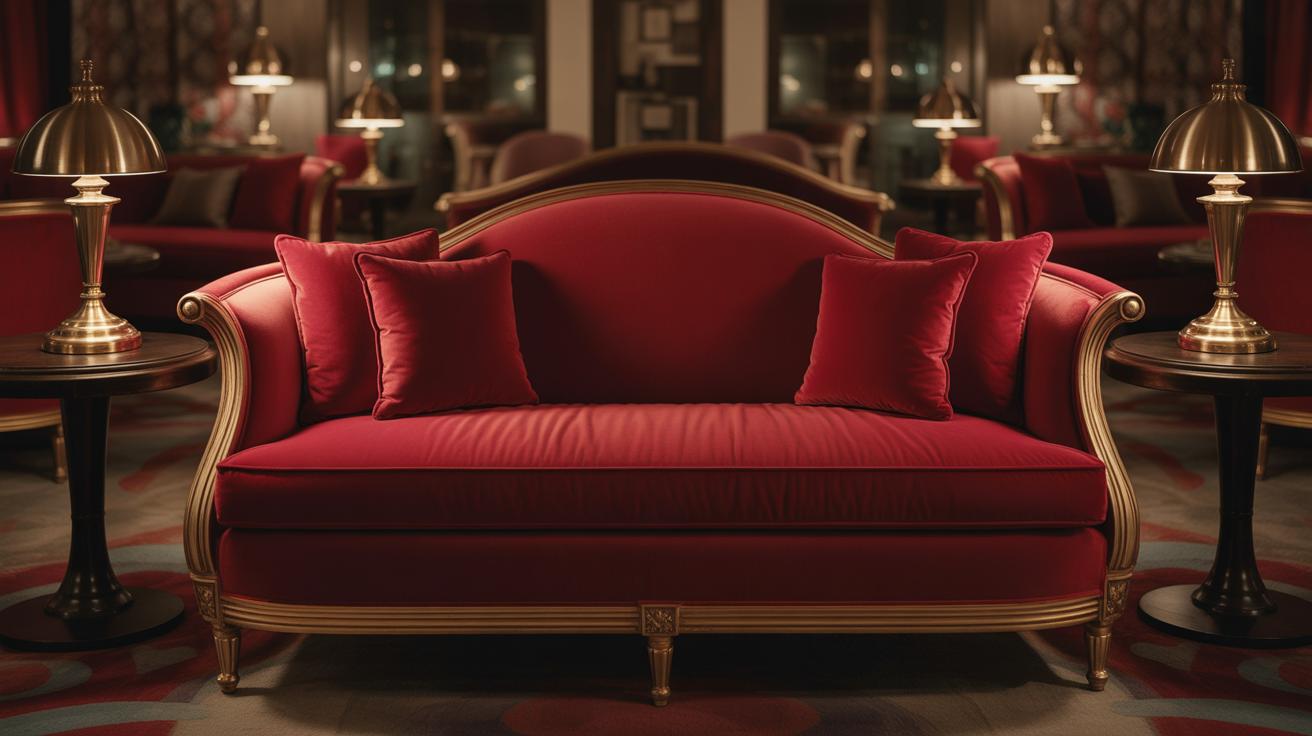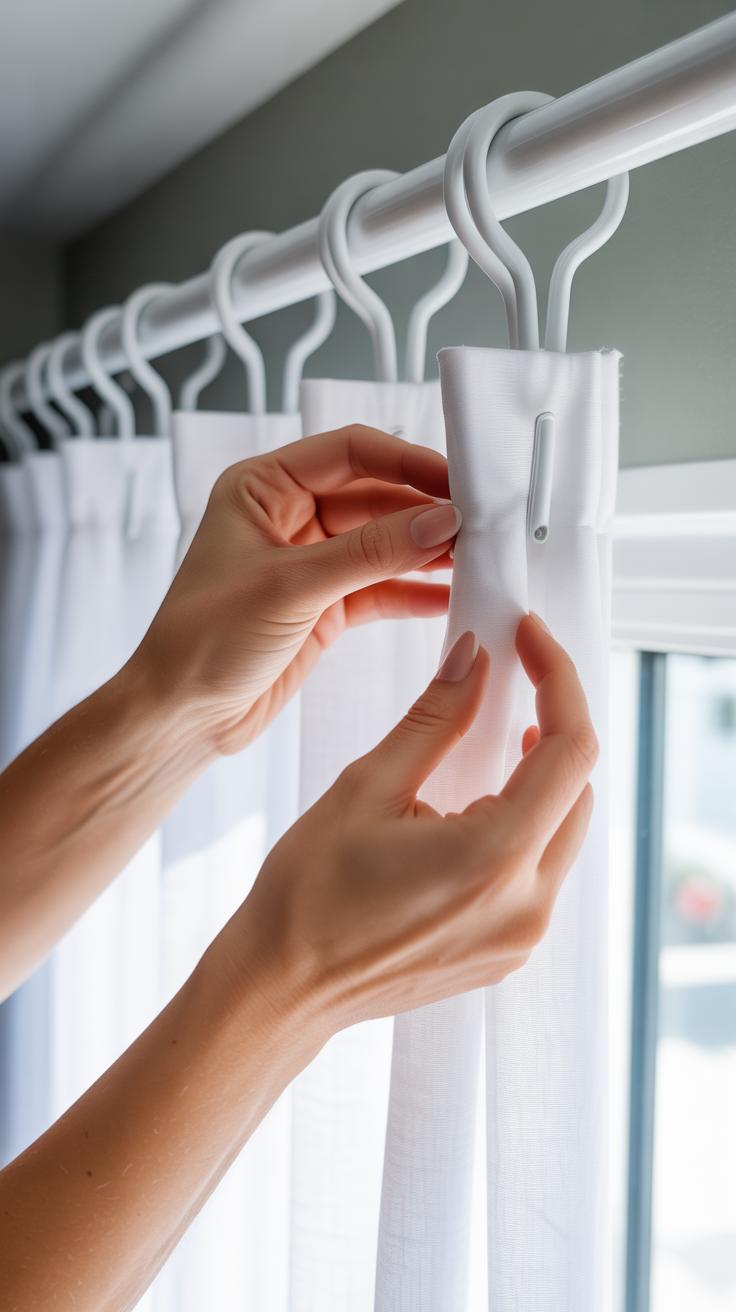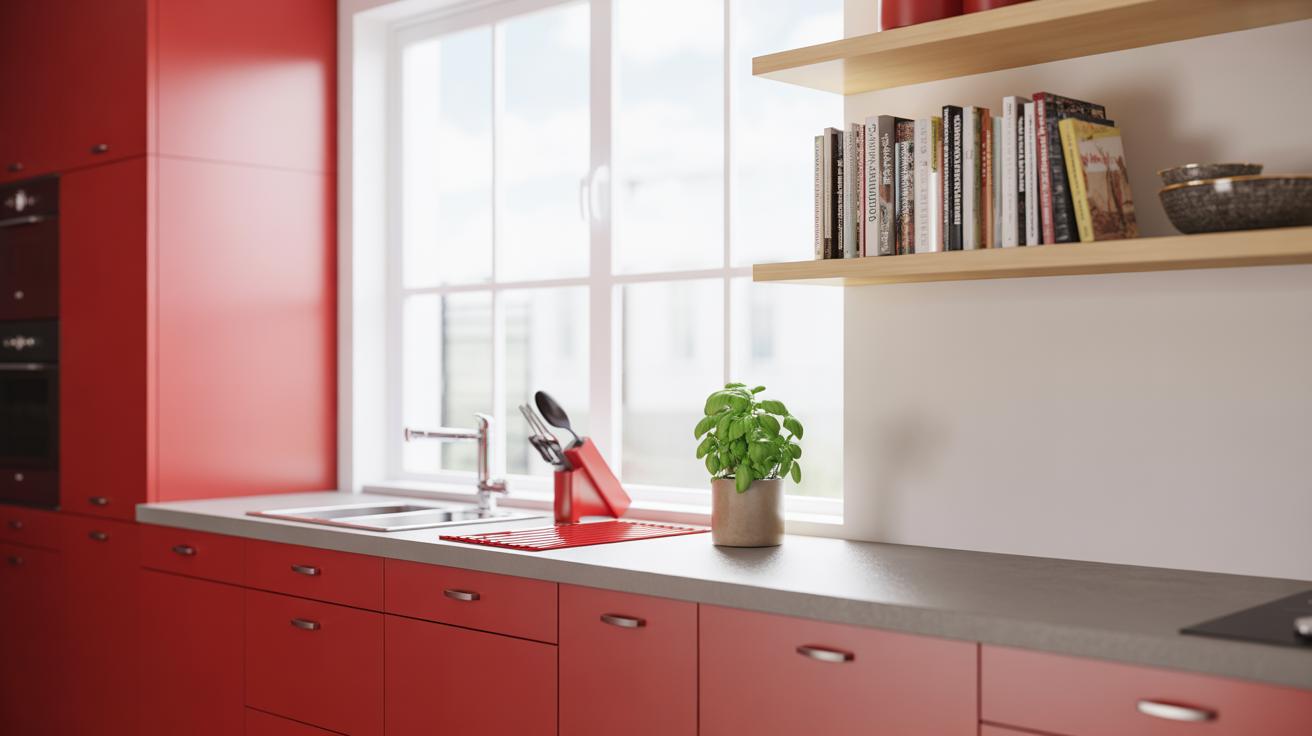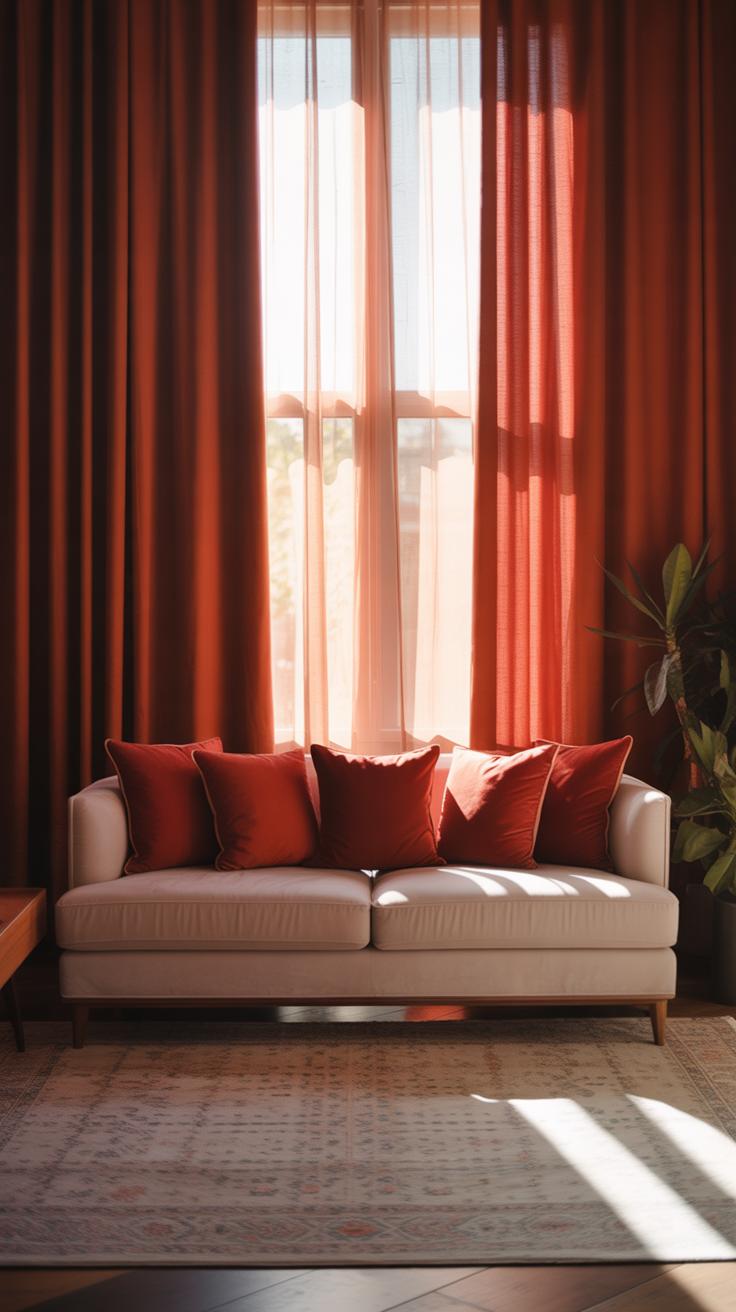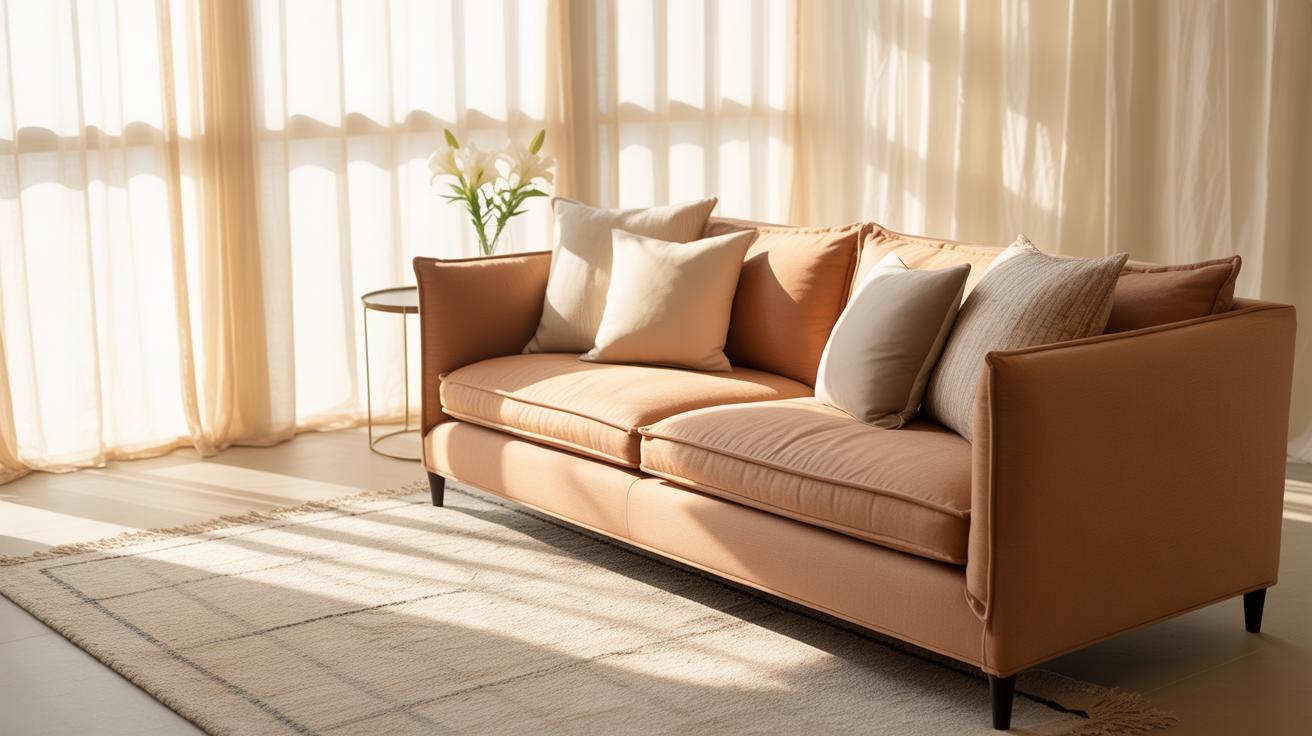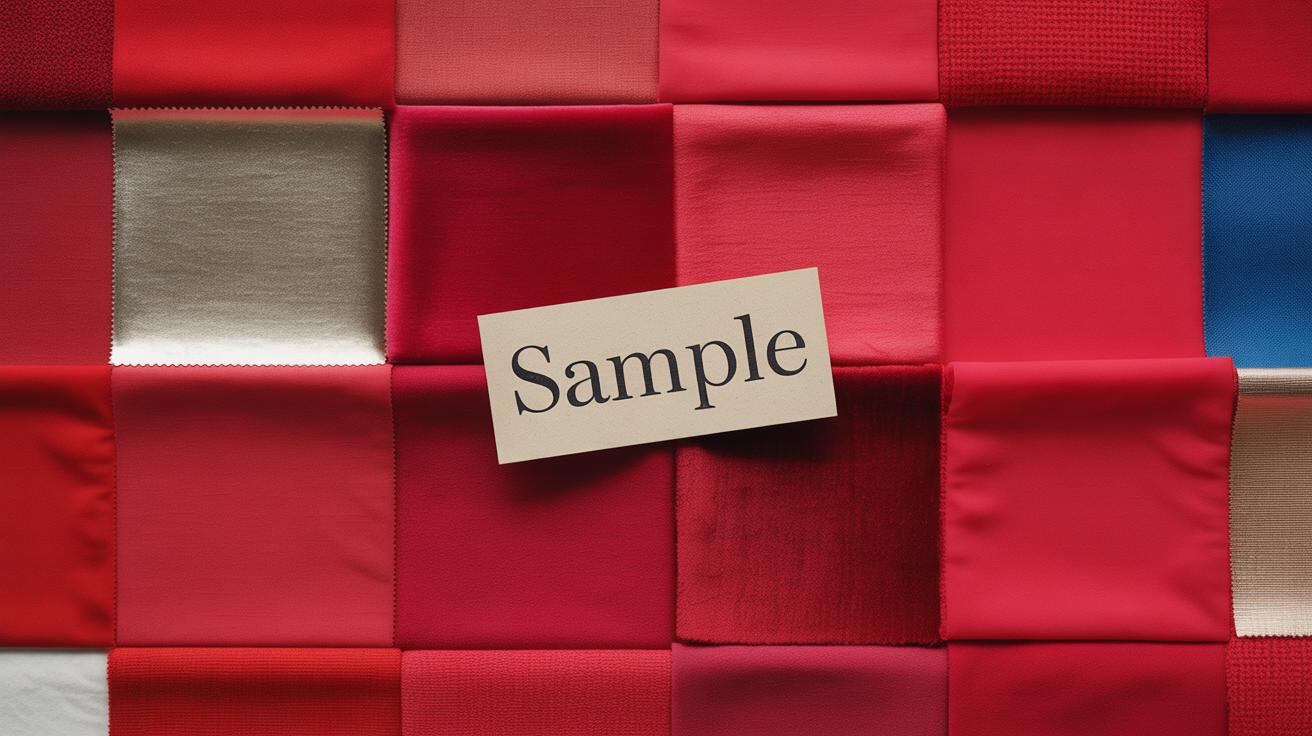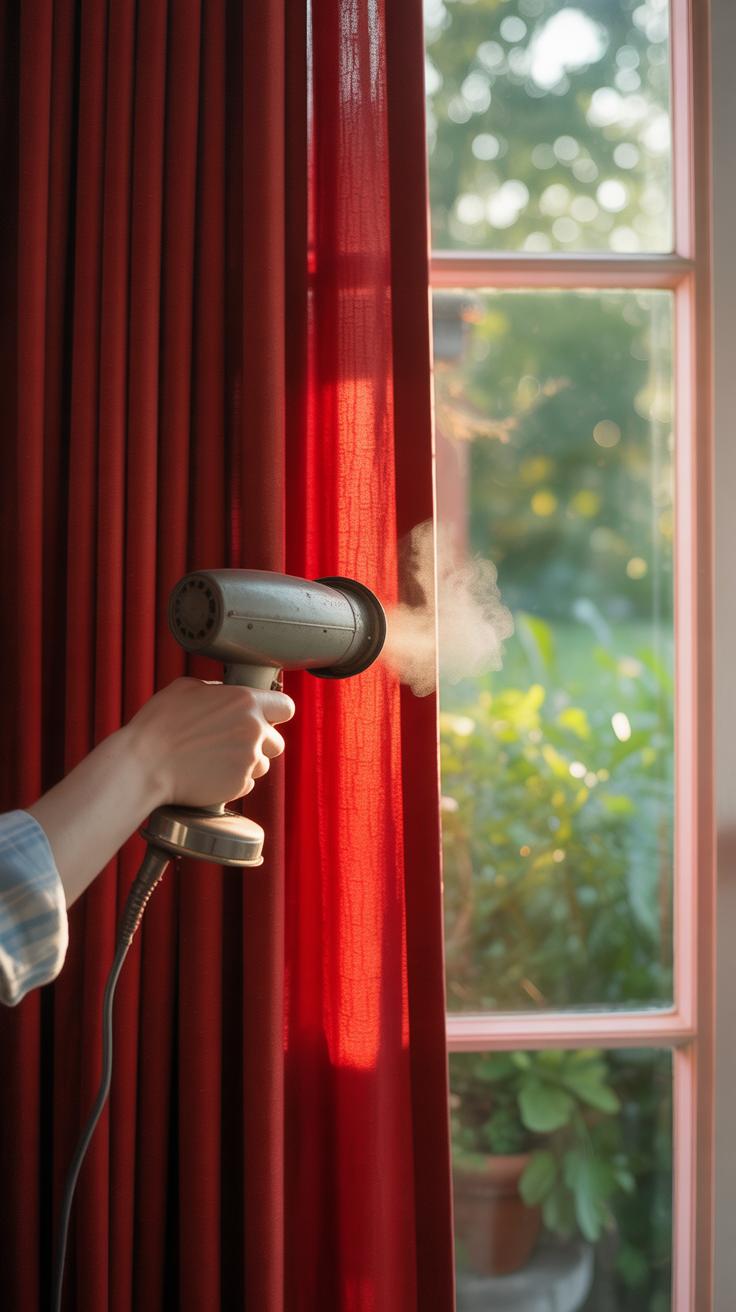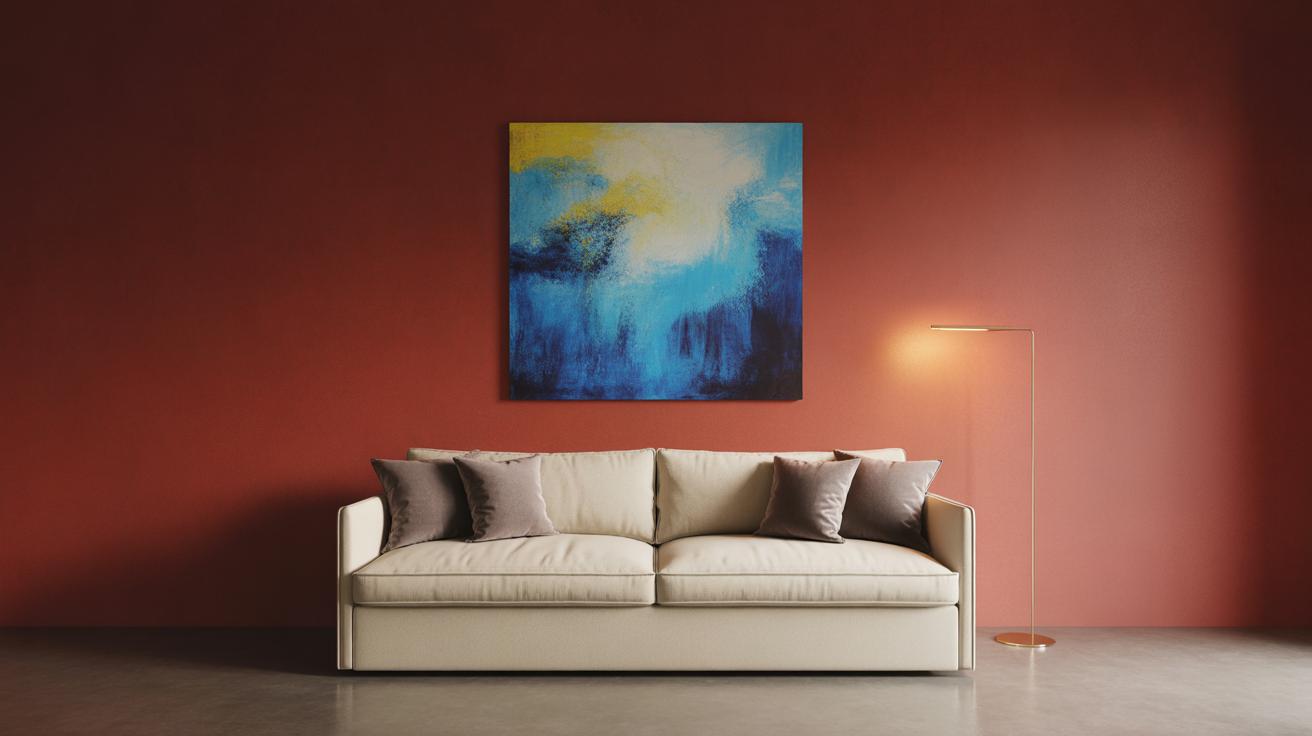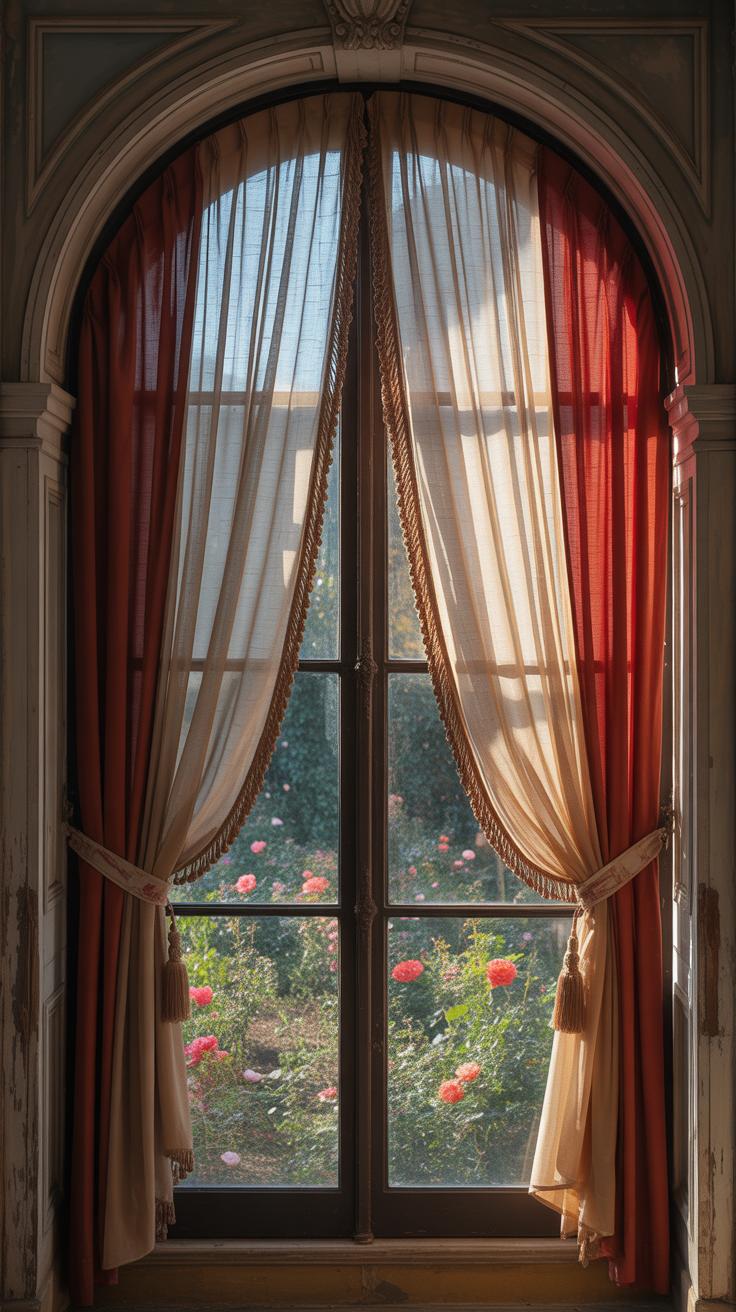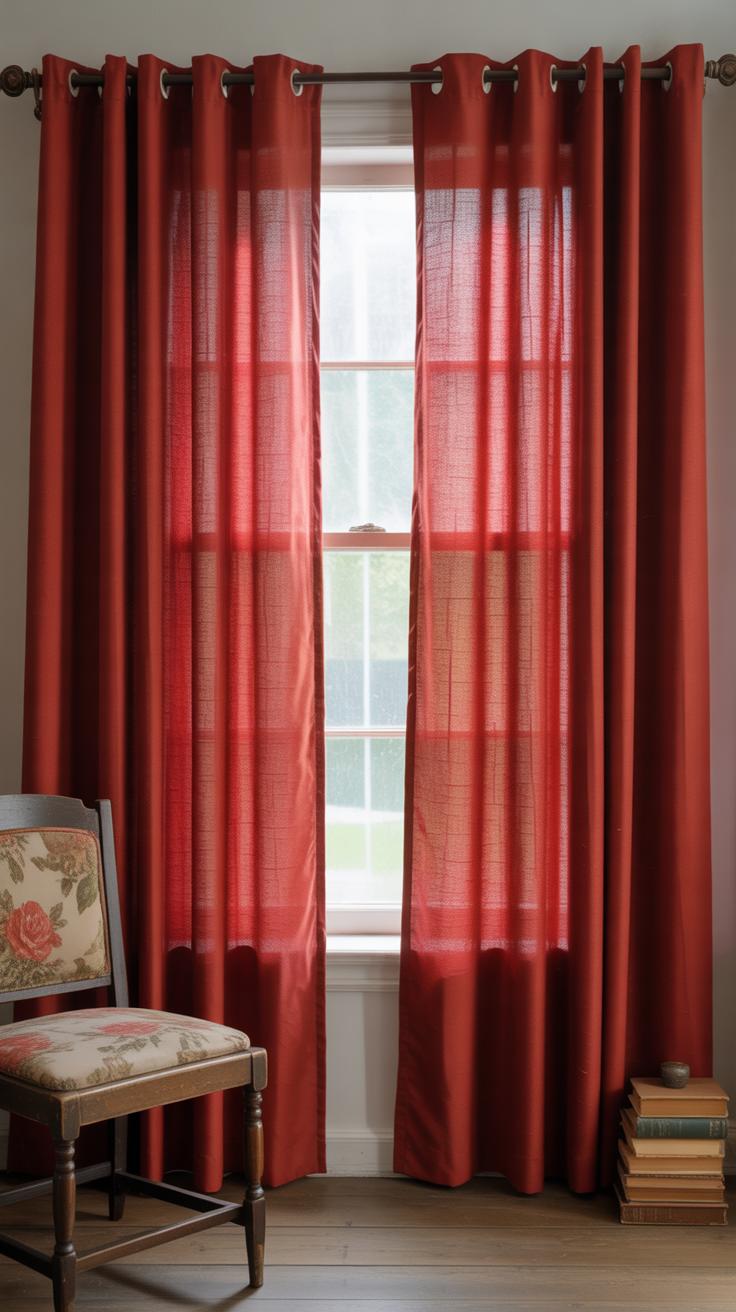Introduction
Red curtains are a bold choice for window treatments that can add warmth and drama to your space. They not only help frame your view but also create a cozy and striking atmosphere. Choosing the right shade and style of red curtains can highlight your windows and complement your room’s decor beautifully.
This article explores various ideas for using red curtains effectively to frame the view from your windows. You’ll find practical tips on selecting fabrics, pairing with other colors, and maintaining your curtains. Whether you want a rich classic look or a modern vibrant touch, these ideas will help you make your windows a standout feature.
Understanding the Impact of Red Curtains
Why Choose Red Curtains
Red is a color that grabs attention. It can make a room feel warmer, more energetic, even a bit bold. People often pick red curtains because the color stirs up strong feelings—passion, excitement, or sometimes comfort. You might hesitate at first, wondering if red is too much, but it can add life to a dull space without overwhelming it. It’s not just about brightness; it’s the mood red sets. The deep reds can make a room cozy and intimate, while brighter reds seem livelier, maybe even playful.
Think about a space where you want to feel pumped up or focused. Red can nudge your energy a bit. Some say it increases appetite or attention, which explains why restaurants use red often. So, if you’re looking to give your room a bit of a mood shift without changing furniture or paint, red curtains might be a simple choice that shifts how you feel inside that space.
How Red Curtains Frame Your View
When it comes to framing a window, red curtains do something interesting. They don’t just hang there; they pull your gaze toward the glass, almost like they’re spotlighting whatever outside your window. The boldness of red acts as a border, making what’s outside seem sharper, more vivid. It’s like your window turns into a framed picture, but the frame is intense, pulling you in.
At the same time, the red fabric around your window can soften the contrast between the bright outdoors and the interior. Instead of feeling like a stark edge, the window feels part of the room. You might notice how the red plays off natural light, sometimes making colors outside look warmer or more dramatic. But then again, if your view is already colorful, red curtains might compete with it a bit—something to think about if you love a calm, subtle look.
So, red curtains do more than block light; they shape how you experience your window, both inside and out. They invite a specific feeling and focus, making you consider your view as an active part of your room’s character.
Selecting the Right Shade of Red
Bright Reds vs Deep Reds
When choosing red curtains, one of the first decisions is whether to go with bright or deep reds. Bright reds, like cherry or scarlet, give a room energy. They draw the eye and can make a space feel lively, even bold. If you want your curtains to be the centerpiece, bright reds work well—but they can also overwhelm if the room is small or already busy.
Deep reds, such as burgundy or wine, feel more restrained and cozy. They bring warmth without shouting too loudly. Deep reds tend to suit spaces where you want calm and sophistication, maybe a library or bedroom. Yet, they might make a room feel darker, so you’ll have to think about lighting carefully.
Matching Red Curtains to Room Lighting
Lighting makes a big difference in how your red curtains look. Rooms flooded with natural light can handle darker shades without feeling gloomy. If your room faces north or doesn’t get much sunlight, brighter reds might brighten the mood. On the other hand, in spaces with strong afternoon sun or powerful artificial light, deep reds can soften the glare and feel more balanced.
Artificial lighting also plays a role. Warm bulbs can make deep reds appear even richer, almost velvety. Cooler lights might bring out orange tones in bright reds unexpectedly. So, think about the time of day you use the room most, and what kind of lighting is there—it might tip you toward one shade or another.
Have you ever noticed how the same shade of red changes as the light shifts through the day? It’s tricky but kind of fascinating. That’s why testing fabric samples at different times is probably a good idea before making a final choice. Isn’t it interesting how something as simple as color can ripple through a room’s whole feel?
Choosing Curtain Fabrics
Light Fabrics for Sheer Effects
Lightweight fabrics like voile, chiffon, or organza give red curtains a delicate touch. They let filtered sunlight through, casting a subtle red glow without overpowering the room. Maybe you want some privacy but still crave natural light—these fabrics work well for that. They create a soft frame around your window, offering color without shutting out the world.
Still, they won’t block streetlights or busy views entirely. So, if you need full privacy at night, light fabrics alone might feel a bit exposed. But paired with a thicker layer, they add depth and layers to your window treatment. Letting some light in while coloring the space—red curtains in sheer fabrics can freshen a living room or kitchen without feeling heavy.
Heavy Fabrics for Privacy and Insulation
For rooms where privacy is key, thick fabrics like velvet, suede, or heavy cotton come into play. These materials block light almost entirely, which can be helpful if you want to darken a bedroom or limit glare on a TV. Plus, they actually add warmth. I’ve noticed that heavy curtains keep cold drafts at bay better than thin ones, making a room feel cozier in winter.
On the downside, heavy fabric can sometimes make a space look smaller or darker if you’re not careful with the shade of red. But those rich textures add drama and depth. So if you like the idea of a bold statement that doubles as practical insulation and privacy, heavy red curtains are a solid pick.
Measuring and Sizing Your Curtains
Measuring your windows for red curtains isn’t as straightforward as just grabbing a tape measure and jotting down numbers. You want to be sure your curtains frame the view just right and enhance the room’s feel without overwhelming it. When measuring width, start by measuring the exact width of the window frame. Then, add extra inches on each side — roughly 4 to 8 inches — to make sure the curtains can fully cover the window and stack nicely when open. I usually find that people underestimate this part, which can make curtains feel too tight or skimpy.
For height, measure from the curtain rod (or where you plan to install it) down to the desired length. This is where style choices come in — do you want the curtains to just touch the sill, extend a bit below it (the apron length), or flow all the way to the floor? Each length sends a different message. Sill-length curtains can make a room feel neat and casual, apron-length adds a bit of drama while keeping it tidy, and floor-length curtains create a more formal or luxurious vibe. I have to admit, it took me some time to get a feel for which length worked best in my own space. It often depends on how the rest of the room is styled and what kind of impact you want your red curtains to make. Just remember, measuring twice helps avoid awkward surprises when the curtains arrive.
Hanging Red Curtains Correctly
Choosing the Right Curtain Rod
When picking a curtain rod for your red curtains, the first thing to think about is weight. Red fabrics can vary—from light linens to heavy velvets—and your rod needs to hold them without bending or sagging. I’ve found metal rods with a sturdy diameter often work best for heavier curtains, while thinner rods are fine for lighter fabrics.
Size matters too. Your rod should extend at least 6 to 12 inches beyond the window frame on each side. This gives the curtains room to stack when open, showing more of the window and letting in light. A rod too short will make the window look cramped and will interfere with how the red curtains fall—making them less striking.
Don’t forget style. A simple matte black or bronze rod complements the boldness of red curtains, but a shiny brass or ornate rod might clash depending on your room’s vibe. So, place some thought into how the rod’s finish plays with your space.
Installation Tips for a Polished Look
Start by deciding how high to mount your rod. I tend to hang mine about 4 to 6 inches above the window frame, or even closer to the ceiling if the ceiling is low. This technique lifts the whole window, making the room feel taller—something those dramatic red curtains really benefit from.
Use a level when marking your drill points. Even a slight tilt ruins the whole effect, making curtains look crooked and sloppy. It’s surprisingly common to rush this part and regret it once the curtains are up.
Once your rod is fixed, slide the red curtains on and hang them, but don’t rush to clip or tie them just yet. Step back and check how the folds fall. Red curtains, especially in darker or heavier fabrics, can look stiff if they don’t drape naturally.
Adjust the curtain rings or hooks evenly to avoid awkward bunching. I sometimes find spacing them too closely makes the curtains look bulky or artificial. Give the panels enough breathing room to flow.
Lastly, iron or steam your curtains before installing. Wrinkles show more on red fabric than on paler colors. A crisp, neat curtain instantly adds class.
Styling Red Curtains with Your Interior
Red curtains can really change the feel of a room, but pairing them well with furniture and wall colors takes some thought. If your walls are neutral—think soft beige, light gray, or creamy whites—red curtains stand out without clashing. But don’t be afraid to try deeper paint colors, like navy or charcoal; they create a moody backdrop that makes red curtains pop in a different way.
When it comes to furniture, wood tones—especially warm ones like cherry or mahogany—tend to work nicely with red. You might notice I tend to avoid pairing red curtains with too many bold patterns nearby; it can get visually overwhelming. Instead, solid-colored sofas or chairs in muted tones, like soft browns or even muted blues, usually balance the vibrancy of red.
Colors that complement red curtains well include:
- Earthy greens, such as olive or sage, which calm the intensity of red without dulling it.
- Rich gold or mustard shades, adding warmth and a subtle hint of luxury.
- Dark blues, offering a classic contrast that feels grounded.
- Neutral grays, sweetspeaking volumes without getting too loud.
You can also try pairing red with softer pastels if you want a more playful or eclectic vibe, but that depends on how bold you want the overall look.
Using red curtains as a focal point means letting them command attention. Try keeping nearby décor minimal. Imagine a room where the red curtains are nearly the only color splash—furniture in soft creams, walls simple and unadorned. That kind of setup ushers your eyes straight to the drapes.
Alternatively, highlight their presence with matching accents—a red throw pillow or vase. Small touches that echo the curtain hue help the space feel curated without forcing it. It’s a subtle way to tie the whole room together while still keeping red curtains at center stage.
Have you ever noticed how certain colors just shift your mood? Red might be intense, but styled thoughtfully, it can warm your space or give it a dramatic edge that’s hard to ignore.
Maintaining Red Curtains
Regular Cleaning Practices
Keeping red curtains looking fresh isn’t as hard as it might seem, but it does require some care. Dust tends to settle quickly on fabric, so a regular light dusting can help a lot. You could use a vacuum with a brush attachment or a soft lint roller—both work fine. I find vacuuming gently on a low setting usually does the trick without pulling the fabric.
When it comes to washing, always check the care label first. Some red curtains can handle machine washing on a gentle cycle, but others need hand washing or dry cleaning to avoid damage. Washing in cool water helps maintain color, and it’s better to avoid harsh detergents. I’ve learned the hard way that even seemingly “mild” bleach alternatives can dull reds.
Avoiding Color Fading
Sunlight will fade most colors over time, red especially. You probably notice it if you ever look closely. One way to slow fading is to line your curtains with a UV-protective fabric or backing. Even a thin lining can block some harmful rays without changing the look.
If lining seems like too much, rotating curtains or closing them during peak sun hours can help. It’s a bit inconvenient but effective. I’ve also seen people use sheer panels underneath so the reds don’t get direct sun all day. It raises an interesting question—should you protect the fabric or just accept its changing look as part of its charm?
Creative Ways to Frame Your View
Layering Curtains for Depth
When you think about red curtains, layering can change everything. Try pairing a sheer red curtain with a heavier opaque one behind it. The sheer fabric lets light filter through gently, softening the boldness of red but keeping its presence alive.
This combination creates texture and dimension in front of your window. It feels like the curtains shift as the light changes during the day. In the morning, the sheers glow warmly, and by evening, the opaque layer adds a richer, more dramatic touch.
Sometimes, sheer curtains might seem too subtle alone, while opaque ones feel too heavy. Together, they offer balance — a way to control privacy without losing the connection with the outside. You can even play with different reds for a layered ombré effect, which might be too much for some but quite rewarding if done thoughtfully.
Curtain Tiebacks to Reveal Views
Pulling back red curtains can be an art on its own. Tiebacks don’t just hold fabric; they frame the view beyond your window. There are plenty of stylish options to consider.
- Metal rings or classic hooks: perfect for a clean, elegant look that keeps curtains drawn but not forgotten.
- Fabric tiebacks: made from matching or contrasting red material, adding softness while highlighting your style.
- Leather straps or braided cords: these bring texture and sometimes a little rustic charm, grounding loud reds with something tactile.
Using tiebacks thoughtfully means you invite the outside scene right into your room. It’s almost like a live picture frame you can adjust at will. This makes you wonder: what’s your favorite way to combine function and style here? Sometimes, the simplest tieback feels perfect, but I can’t help but like the little twists that add flair and draw your eye outward.
BudgetFriendly Red Curtain Ideas
Red curtains can add a bold splash of color without emptying your wallet. If you keep an eye out, you’ll find plenty of affordable options that don’t sacrifice style. Fabrics like cotton blends, polyester, and linen blends often come in rich reds and sell at reasonable prices—sometimes even on clearance or discount racks if you’re lucky. These materials are durable enough for everyday use, and they tend to drape well, creating that striking frame for your window.
Don’t overlook thrift shops or online marketplaces. I once found a deep crimson curtain panel for less than ten dollars that looked as good as a store-bought one. It might have taken some washing and a touch of ironing, but the result was worth it. Also, buying curtain panels in bundles or off-season can save you a surprising amount.
Affordable Materials and Options
When choosing fabric for red curtains, consider:
- Cotton or cotton blends: breathable, easy to clean, and widely available in different shades of red.
- Polyester: often cheaper than natural fibers and quite durable, though sometimes less breathable.
- Linen blends: offer a nice texture without the high price tag of pure linen.
- Velvet or faux velvet remnants: these can be affordable if you shop sales or use fabric scraps creatively.
Sometimes a simple red bedsheet or tablecloth can be repurposed into curtains in a pinch. If the fabric feels okay when held up to the light, it might work.
DIY Red Curtain Projects
If you’re up for a bit of hands-on work, making your own red curtains can be quite straightforward. You don’t need a fancy sewing machine—basic stitching works. Try these ideas:
- Buy fabric by the yard and cut to your window’s exact dimensions.
- Use iron-on hemming tape if sewing isn’t your thing—it holds edges firmly and looks tidy.
- Attach curtain rings or clip hooks directly to your fabric for easy hanging without needing a header.
- Add embellishments like ribbon trim or simple stenciled designs to personalize your curtains at minimal extra cost.
One time, I skipped heavy lining to save money and just folded over the fabric edges twice for a neat hem. It wasn’t perfect, but the curtains held up over several seasons. Would you consider trying this? Sometimes a small imperfection gives a room a bit of charm.
Conclusions
Red curtains offer many ways to enhance your living space. They draw attention to your windows and create a warm ambiance. When chosen carefully, red curtains can beautifully frame and highlight the view outside, making your room feel inviting and complete.
Consider your room’s lighting, decor style, and the curtain material to get the best effect. Small details like curtain length and accessories will also impact the overall look. With these ideas, you can confidently pick and style red curtains to bring charm and coziness to your home.

